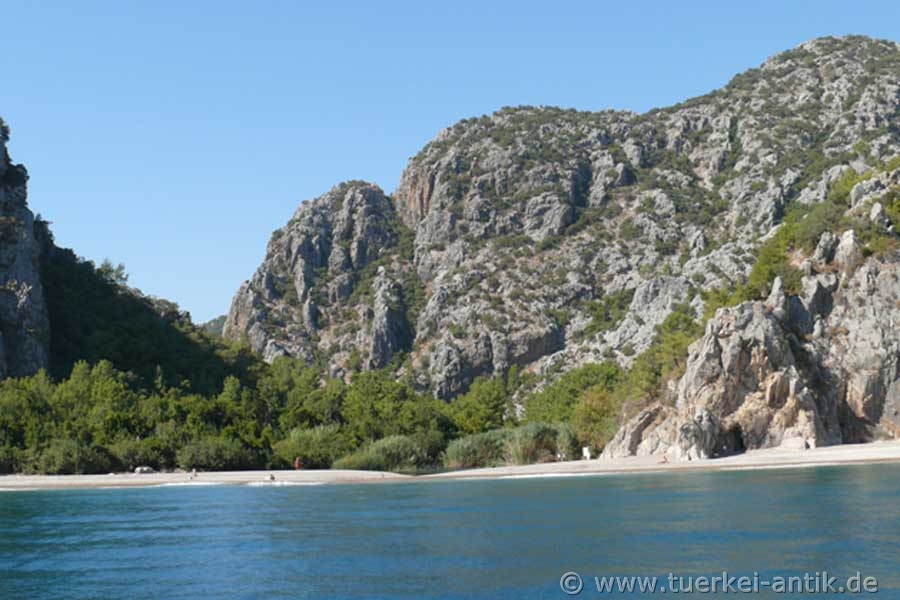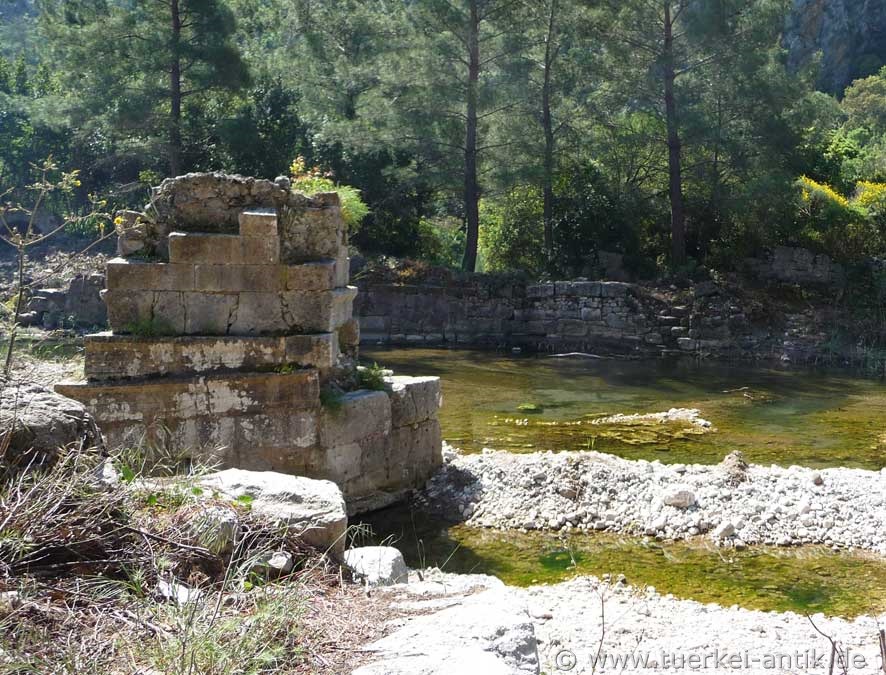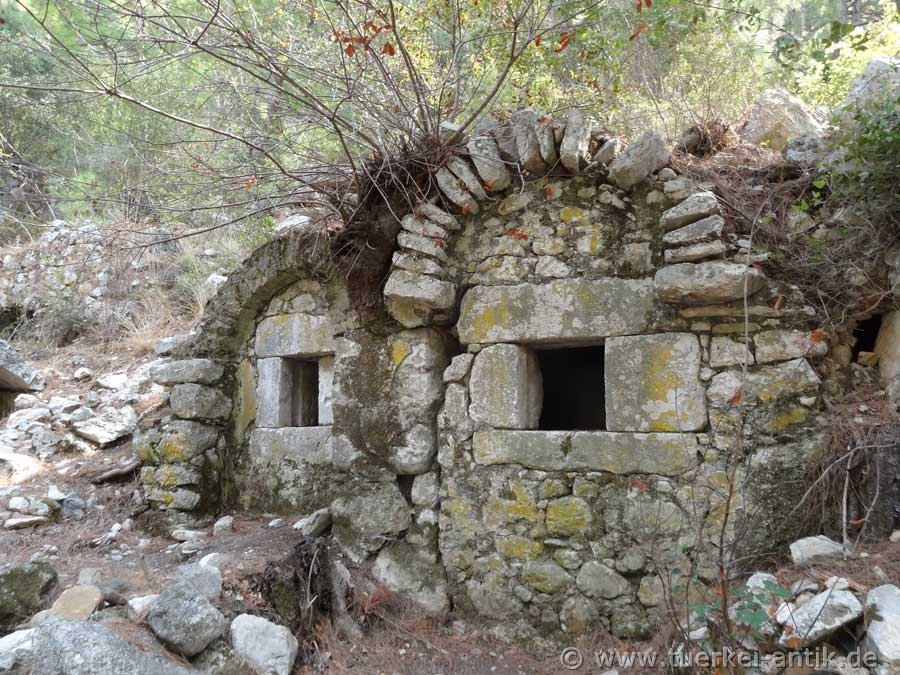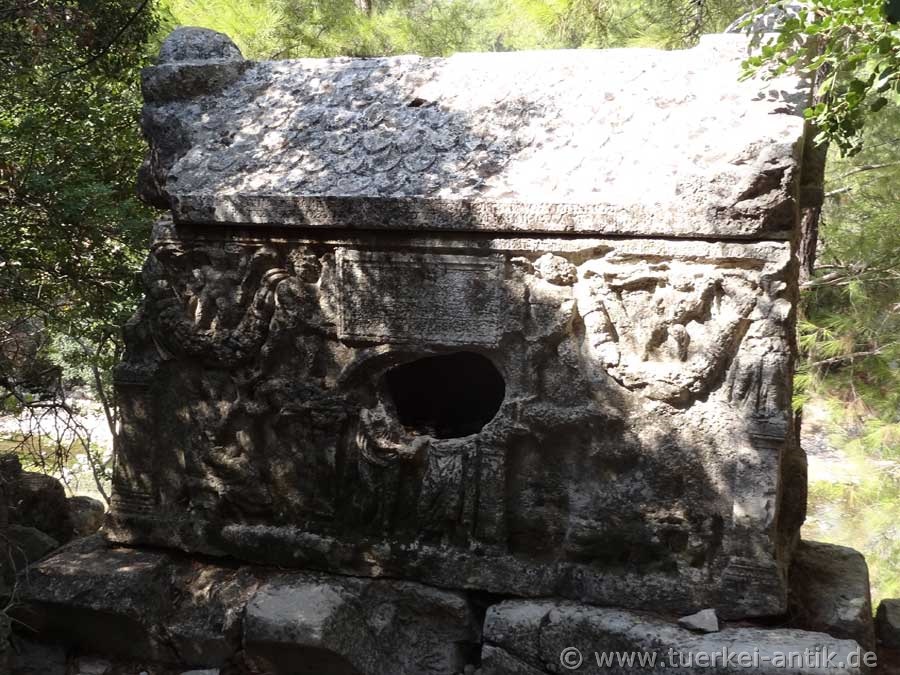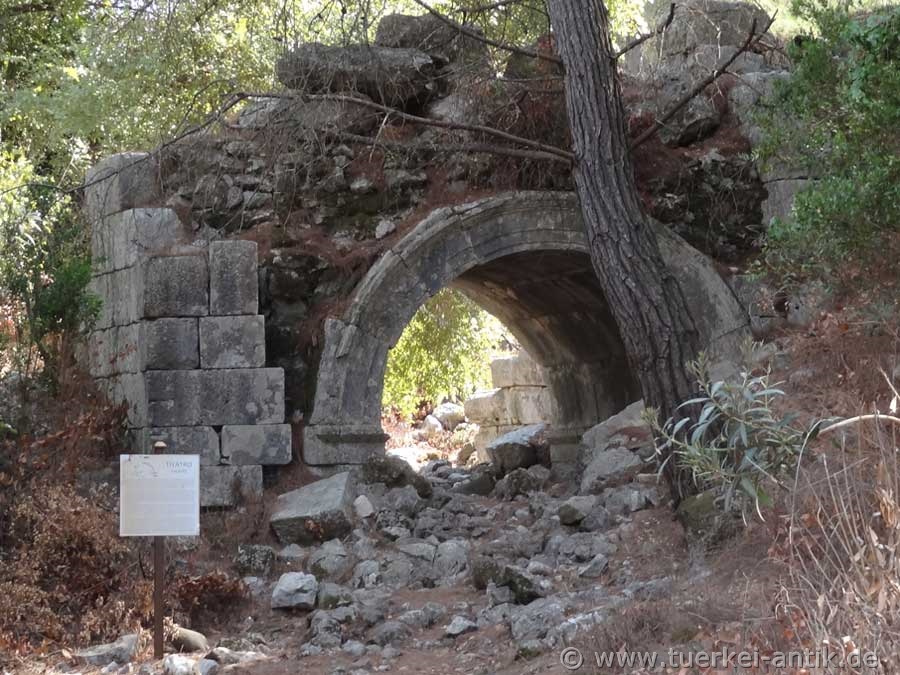 |
| Olympos | |||
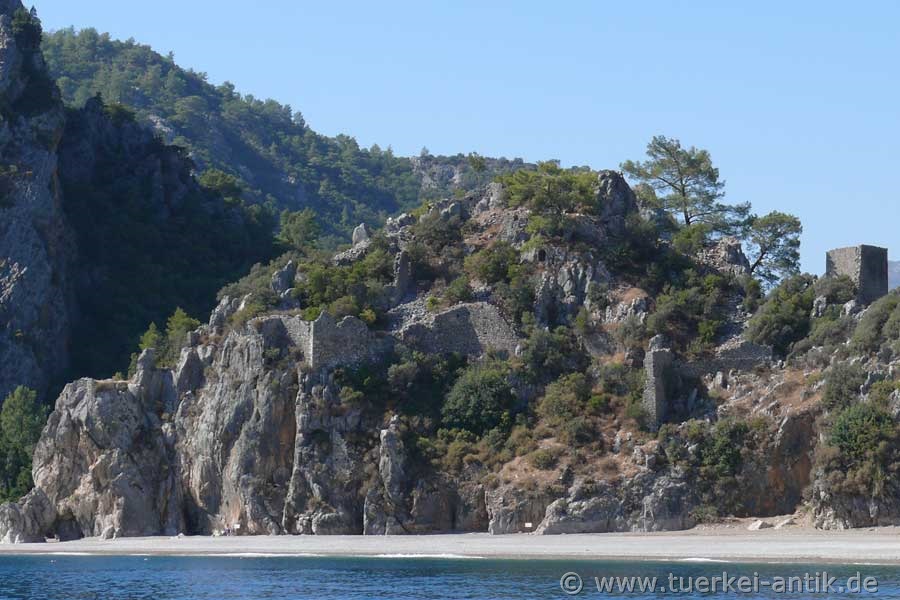 |
|
||
| The Acropolis of Olympos | |||
|
The ancient Olympos is located at the southern end of the bay of Ciralı. Founded as a port city probably in Hellenistic times, the city was a member of the Lycian Confederation. The name of the city derives from Mount Olympos, today's Tahtali, at the foot of which the city is located. At the beginning of the 1st century B.C., Olympos suffered the same fate as the nearby city of Phaselis - it was conquered by Cilician pirates. Directly on the coast rises the steep castle rock with remains of the fortifications. |
|||
|
|
|||
| The well defendable former harbour entrance | |||
|
In 77/78 BC the Romans conquered the city and put an end to the pirates' activities. The prosperity that the city had experienced during its membership in the Lycian League was also no longer achieved in the Roman imperial period, although an upswing was once again recorded. Olympos was famous for the nearby "eternal fires" of the Chimaira, around which the cult of Hephaistos, the Greek god of fire and forge, was built. In the 3rd century A.D. Olympos is once again mentioned as a bishopric - but in the 15th century the last inhabitants finally left the city. |
|||
|
|
|||
| The portal of a Roman temple from the 2nd century B.C. | |||
|
For a long time Olympos was completely forgotten. The city was divided in two by a stream. The remains of a bridge can still be seen. Unfortunately, the remaining buildings, such as a small Roman theatre, the remains of a temple from the 2nd century B.C. as well as a basilica from the Byzantine period are heavily decayed and largely overgrown. The necropolis with numerous graves, which are, however, not all of Lycian origin, cannot be overlooked. |
|||
|
|
|||
| Byzantine Basilica at the harbour | |||
|
|
|||
| At the former harbour. Left the middle pillar of the bridge at the harbour entrance | |||
|
|
|||
|
|
|||
| Byzantine basilica on the left side of the river | |||
|
|
|||
|
Grave buildings in the southern necropolis on the right side of the river |
|||
|
|
|||
|
|
|||
|
The richly decorated sarcophagus of Alkestis |
|||
|
|
|||
| Preserved theatre access (parodoi) from outside | |||
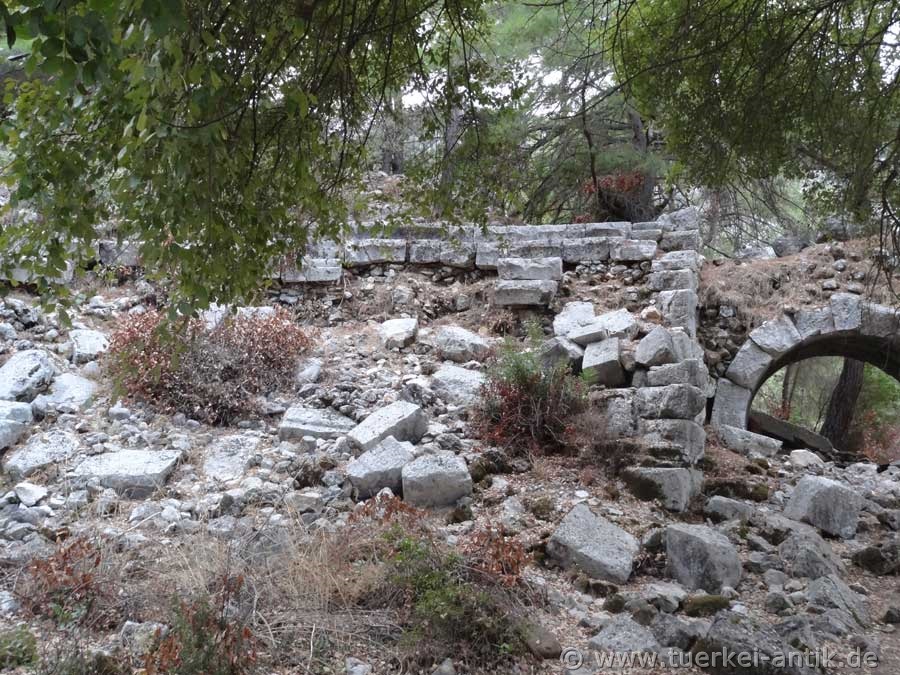 |
|||
| The right entrance from the inside and remains of the cavea (rows of seats) | |||
|
Das römische Theater wurde in einen natürlichen Hang gebaut und ist, wie die gesamte Stadt, noch nicht gänzlich erforscht und ausgegraben. Es sind Reste der cavea sowie der rechte parodoi erhalten geblieben. |
|||
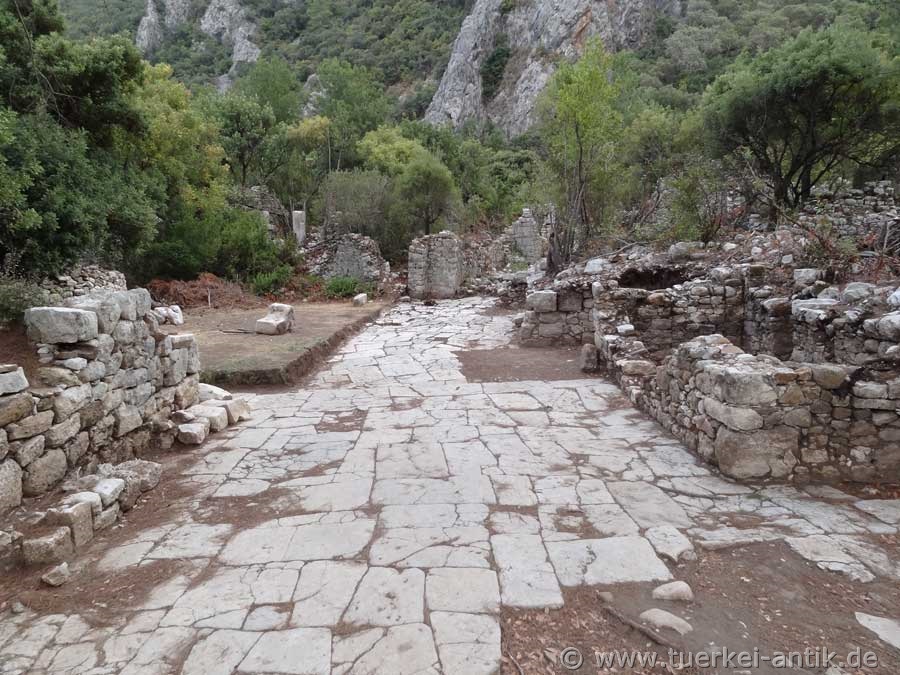 |
|||
| Excavations in the harbour area | |||
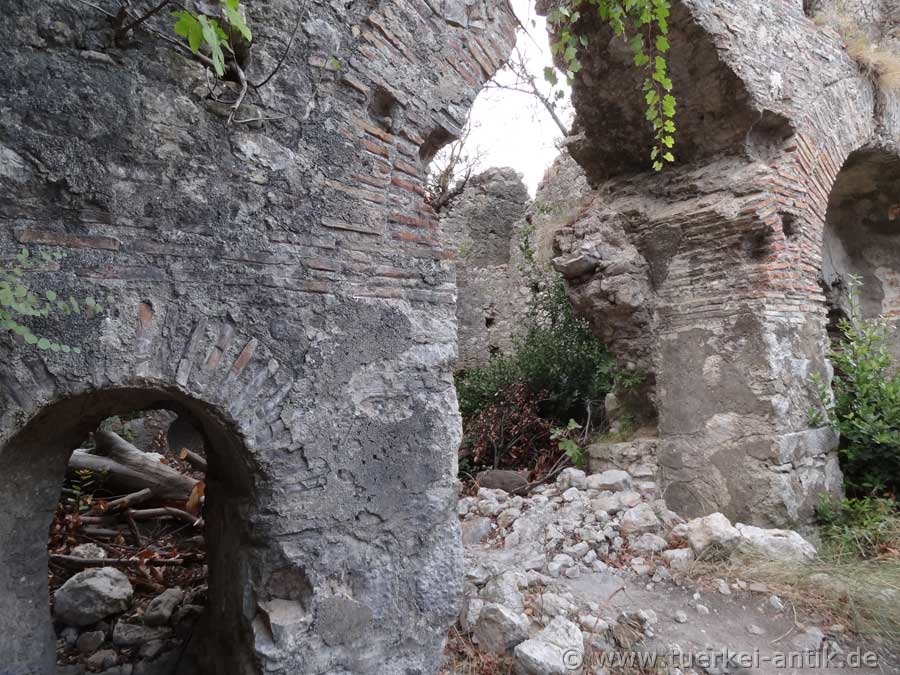 |
|||
| In the Roman harbour bath | |||
| Photos: @chim | |||
| Translation aid: www.DeepL.com/Translator | |||
| Source: Wikipedia and others | |||
|
|
|||

